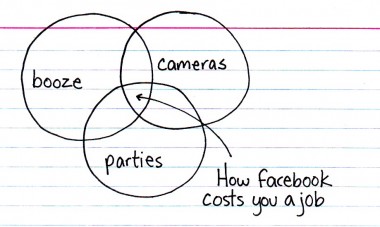It’s not a pleasant topic to discuss. There are typically two general scenarios for involuntary separation – layoffs and termination. Layoffs entail a general reduction in work force due to a need to reduce expenses. Layoffs usually imply that those it affects were dismissed through no fault of their own and that they were otherwise good employees. Termination, on the other hand, indicates that the employee had failed to meet the expectations of the job and was otherwise incompatible with the needs of the employer. This is such an unpleasant topic that people manufacture lots of words to offer a little semantic comfort to the whole affair. I’ve heard layoffs called redundancies, retrenchment, reduction in forces (RIF), etc. Terminations are sometimes called firings, dismissals, and other more colloquial terms like “getting canned”. But sad news is, in these difficult economic times, we might be asked to let someone go in our role as lead technologist on the team.
Know the Law
Let me first start off by saying that this process is largely demarcated by the laws of the country and state that you live in as well as the capability and resources of your organization’s HR department. So what is legal and an accepted business practice in California might be blatantly against the law in the UK. And the way in which a layoff or termination is handled within California can vary enormously, but mostly is due to the way the HR department (dis)functions. However, there are some common practices that we should all take into account when we work in a firm that is organized according to standard business practices of the Western world.
How to Handle “Unhiring” as a Manager
The first rule for team leaders in “unhiring” situations, in my opinion, is that no employee should be surprised by the situation. Whether in layoffs or terminations, their team leader should inform them of the lay of the land. In layoff situations, it’s a tough situation to maintain good employee morale in the face of potential layoffs. But ethically, every team lead should also be as forthright in explaining the possibility of a reduction in staff. For employees who are underperforming, they should have experienced multiple “counseling” sessions, course corrections, and documented instances of failing to meet expectations.
A couple old management axioms support this line of thought – first, managers should praise in public and correct in private. But correcting inadequate or bad behavior is a must as the team lead. Second, managers must correct promptly whenever they see a problem. If an employee on your team doesn’t already have a good idea that they’ve been misbehaving or failing to meet expectations, then shame on you. In addition, you must have documentation. Many new team leaders forget or underestimate the importance of maintaining a file for each team member, which contains all records of any corrective situations. Your documentation is essentially your proof that the termination is justified. If you don’t keep up with the documentation, you’re asking for trouble.
The second rule of unhiring is providing the dismissed employee with a dignified and respectful exit. Your HR department may have a good process for this, but that’s not always the case. It’s up to you to make sure that the process includes several elements. Unless there was gross negligence or malice on the part of the employee, a severance package is appropriate. The dismissal procedure should include a discussion of what they can expect from the company after they leave, for example, their COBRA health insurance rights. They should also have a good idea what sort of recommendation they’ll be getting from the organization once they’ve gone. Also, the nature and timing of the dismissal is important. For example, don’t dismiss on a Friday where the employee has nothing to do but stew over their termination. Instead, dismiss early on a Monday morning (the earlier, the better) so that the until-recent-employee has all week to get in touch with their contacts and start their job search. Also, don’t dismiss them when the whole work force is in the office. Before work, during the lunch hour, or after work are better so that no one has to lose face before their peers.
The last element of the dismissal process is the exit interview. Exit interviews are especially important to allow the dismissed employee the chance for closure on their job. But, especially with employees who were layed off due to no fault of their own, the dismissal may be a good chance for the organization to capture lessons learned and important institutional knowledge that can improve the team and the overall organization. Exit interviews are touchy subjects though and should be steered towards productive discussions. They’re not intended to give the dismissed employee the opportunity to tear down other employees or the company overall.
Aftermath
You must now deal with the aftermath of the dismissal, that is, follow-up with the rest of the team. Your goal is to keep team morale as high as you can, ensure that productivity doesn’t dip, and that the team members don’t start looking for greener pastures.
During layoffs, it’s important to emphasize to all remaining team members the cost-cutting nature of the move and that every employee who was layed off was well-taken care of through severance packages. (If you can’t tell the rest of the team this with a straight face, find another job yourself. Don’t work for a company that doesn’t take care of its employees because you could be experiencing that treatment yourself at some point.) If you can, ensure the rest of the team that the layoffs were sufficiently deep and that no more cuts will be made.
For a termination, you must be non-specific. You cannot tell everyone in the team that “Sally was always rude to customers and, after driving away ACME company, we had to let her go” nor can you say “Roberto’s political rants were one thing, but when he lost two months of data on the last recovery operation, we knew that was the end of the line”. However, you can emphasize that individual choices made by the dismissed employee contributed to their dismissal and that continued good choices will ensure that everyone else on the team remains in good standing. For example, “As long as we all recognized that we’re in a customer service role and that every interaction with our customers is an opportunity to impress, the company will continue to prosper.” This is essentially a blandishment – a comment that you could make at any time that would be 100% true. However, in light of the context of the discussion, your team members can read between the lines to see what the reason for the dismissal might be.
I’m sure you have encountered tips and techniques that you thought were especially effective. I’d love to hear about them!
– Kevin




Speak Your Mind